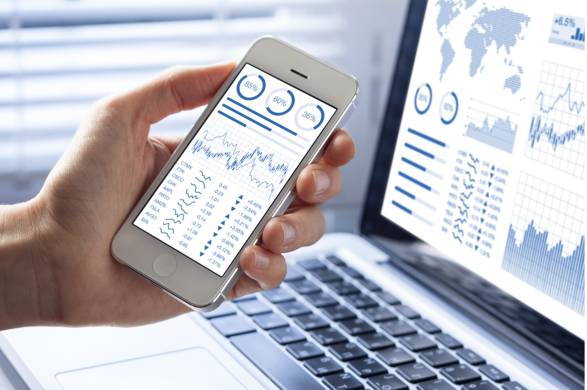We live in an interconnected world. Thanks to technological advances, we have a range of devices in our pockets to allow us to manage everything from our shopping to our relationships. One thing smartphones have undeniably helped is personal finance management; you can now download a range of apps to help you figure out how to pay back quick loans you’ve taken out, build yourself a budget, and more. If you’re new to the world of finance management using smartphone apps, we’re here to help you. Here’s how to manage your finances with apps on your phone, your tablet, and even your desktop PC!
Use Emma to manage your spending
Emma, which is available via the iOS App Store and the Google Play Store, is a comprehensive budgeting app you can use to help you understand and manage your finances. The app will show you how much you’ve got available in each of your bank accounts, tell you when bills are about to come up for payment, and show you how you can make savings depending on your income and expenditure. You’ll need to give it access to your financial information, of course, but your data is safe with Emma.
Try Money Dashboard for great investment options
If you’re someone who likes to look into options for investing your money, then Money Dashboard (iOS, Google Play) is well worth a look. There’s no paid version, unlike many other budgeting apps; all of Money Dashboard’s features are available completely for free, which is impressive given how comprehensive it is. It’ll show you a breakdown of your spending, of course, but it also features options for investment accounts such as Fidelity, as well as cryptocurrency.
Use Snoop for money hacks
Unlike the above apps, Snoop doesn’t really focus on breakdowns of spending and budget (although these are certainly available). Rather, it shows you where you could make smaller spending changes here and there to give you better control over your money. Be aware that Snoop isn’t always accurate in terms of personal recommendations; sometimes it will show you things you don’t really want or need. Still, it’s a great app if you like to spot bargains and money hacks to make life a little easier. You can get it via the App Store or Google Play Store for free.
Try Claro Money if you need help
Sometimes, it’s just not easy to get through life without financial assistance. Claro Money (App Store) understands this, and comes with a very specific benefit, which is that you can speak to a financial coach via the app. There’s a fee for repeat consultations, but if you’re a first-time user, you won’t need to pay this fee. Claro features lots of the same budgeting stats as other apps, but the financial coach option is a serious boon for anyone who’s struggled with money management in the past. There’s no shame in that, so check out Claro if you need some assistance.
Use Honeydue if you’re in a relationship
Honeydue (Google Play, App Store) is a budgeting app built specifically for couples (or anyone who happens to have a shared account). You can use it to see a detailed breakdown of everything you and your partner are spending, and it can help you to make decisions regarding your finances. There’s even a cute little chat function built in so you can talk to your partner within Honeydue. You should use this chat function over apps like WhatsApp because it contains reminders and other helpful features specifically tailored for your finances.
Try Plum if you like automated savings
AI is reaching the point at which it’s able to make autonomous decisions without the input of humans. That might be terrifying in some circumstances, but it’s good news for your savings and your finances. Plum (Google Play, App Store) uses algorithms to tell you an acceptable amount to save each month, so you’re not overcommitting to your savings. It does have a lot of the features offered by other budgeting apps, but unfortunately, it hides some of them behind subscription paywalls, so this is an app to try only if you’re specifically interested in improving your saving efficiency.
Give Chip a try if you don’t like Plum
If you’ve tried Plum and found it wanting, then you may wish to give Chip a try. Like Plum, this is an app that encourages you to put money away in your savings account, and calculates an amount that you’ll be able to afford each month. Unfortunately, if you want to use Chip’s built-in 1.25% AER account for savings, you’ll need to have been referred by a friend or invite one to use Chip yourself. Still, it’s worth a look if you liked the idea of Plum but felt like its execution was lacking. You can get Chip on the Google Play Store and the iOS App Store right now.
Try Goodbudget if you want to manually input data
If you don’t like the idea of giving an app your personal financial information, then Goodbudget (Google Play, App Store) might be a better option for you. Unlike other apps on this list, you don’t need to connect any of your accounts to Goodbudget; instead, you manually input information yourself, and Goodbudget makes recommendations based on what you’ve told it. This is an ideal alternative if you prefer not to give out personal information and would rather make decisions yourself, but an app that catalogues these decisions is an appealing prospect to you.






![YouTube SEO in 2024 [Definitive Guide]](https://getpixie.com/wp-content/uploads/2024/02/shutterstock_1684828252-1-150x150.jpg)








